Hovering hummingbird wing aerodynamics during the annual cycle. I. Complete wing
- PMID: 28878971
- PMCID: PMC5579086
- DOI: 10.1098/rsos.170183
Hovering hummingbird wing aerodynamics during the annual cycle. I. Complete wing
Abstract
The diverse hummingbird family (Trochilidae) has unique adaptations for nectarivory, among which is the ability to sustain hover-feeding. As hummingbirds mainly feed while hovering, it is crucial to maintain this ability throughout the annual cycle-especially during flight-feather moult, in which wing area is reduced. To quantify the aerodynamic characteristics and flow mechanisms of a hummingbird wing throughout the annual cycle, time-accurate aerodynamic loads and flow field measurements were correlated over a dynamically scaled wing model of Anna's hummingbird (Calypte anna). We present measurements recorded over a model of a complete wing to evaluate the baseline aerodynamic characteristics and flow mechanisms. We found that the vorticity concentration that had developed from the wing's leading-edge differs from the attached vorticity structure that was typically found over insects' wings; firstly, it is more elongated along the wing chord, and secondly, it encounters high levels of fluctuations rather than a steady vortex. Lift characteristics resemble those of insects; however, a 20% increase in the lift-to-torque ratio was obtained for the hummingbird wing model. Time-accurate aerodynamic loads were also used to evaluate the time-evolution of the specific power required from the flight muscles, and the overall wingbeat power requirements nicely matched previous studies.
Keywords: aerodynamics; animal flight; hovering; hummingbird; leading-edge vortex.
Conflict of interest statement
We declare we have no competing interests.
Figures
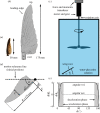

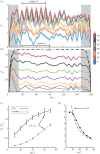
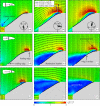



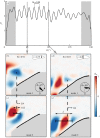

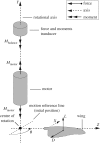
References
-
- Pearson OP. 1954. The daily energy requirements of a wild Anna hummingbird. Condor. 56, 317–322. (doi:10.2307/1365017) - DOI
-
- Epting RJ. 1980. Functional dependence of the power for hovering on wing disc loading in hummingbirds. Physiol. Zool. 53, 347–357. (doi:10.1086/physzool.53.4.30157873) - DOI
-
- Warrick D, Hedrick T, Fernández MJ, Tobalske B, Biewener A. 2012. Hummingbird flight. Curr. Biol. 22, R472–R477. (doi:10.1016/j.cub.2012.04.057) - DOI - PubMed
-
- Chai P, Millard D. 1997. Flight and size constraints: hovering performance of large hummingbirds under maximal loading. J. Exp. Biol. 200, 2757–2763. - PubMed
-
- Weis-Fogh T. 1972. Energetics of hovering flight in hummingbirds and in drosophila. J. Exp. Biol. 56, 79–104.
Associated data
LinkOut - more resources
Full Text Sources
Other Literature Sources
Research Materials
